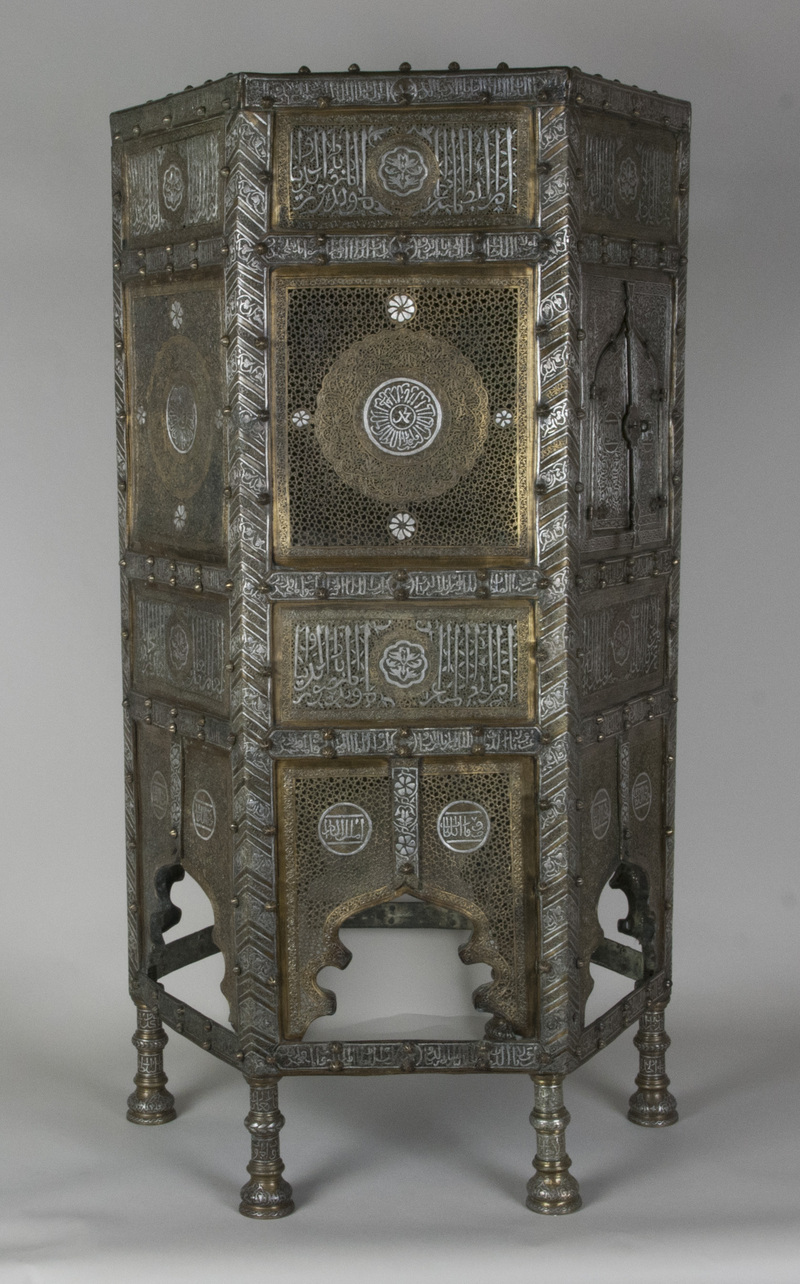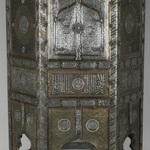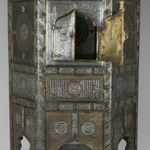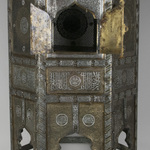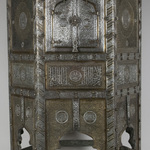Kursi
Koran Stand
NEP69
From: Egypt | Cairo
Curatorial Section: Near Eastern
| Object Number | NEP69 |
| Current Location | Collections Storage |
| Provenience | Egypt | Cairo |
| Date Made | 19th century |
| Section | Near Eastern |
| Materials | Brass | Silver |
| Technique | Inlaid |
| Iconography | Arabic Inscription |
| Inscription Language | Kufic | Naskhi |
| Description | Bronze inlaid with silver. Stand for Koran. Kursi or table. Arabic inscriptions. partly written in Kufic, partly in Naskhi. One medallion and one panel on the top 7 panels and two lines of medallions on the walls. About the same content (with very little variations) as follows: "Glory to our lord, the Sultan, the king, the victorious, the wise, the ruler, fighter for the faith, warden of religion, the powerful, leonine, the triumphant, Nazir ad-Dunya wad-Din Mohammad, son of the Sultan, the king the victorious, the late (martyr), Qalaun, the pious." “Copy of 14c AD original made in the later 19 c AD. Hexagonal table used in a house for storage of books, or as a chafing table to keep food hot; in a mosque as a cupboard for the Qur’an, or as a stand for a candlestick or lamp; or a theological school or hospital. The exterior of this kursi is decorated by engraving, inlaying and with pierced designs as well as with inscriptions written in Naskhi script in Arabic. These inscriptions, on the top, sides, and legs read with little variation: “ Glory to our lord, the Sultan, the king, the victorious, the wise, the ruler, fighter for the faith, warden of religion, the powerful, lionine, the triumphant, Nasir-al Dunya wa’d-Din Muhammad, son of the Sultan, the king, the victorious, Qala’un, the pious.” Sultan Qala’un reigned from 1293 to 1341 AD (693-741 A.H.) during the Bahri Mamluk Dynasty in Egypt. The floor of the interior of the kursi is engraved with a central pattern surrounded by an inscription in Kufic script but is not inlaid. The legs were shaped on a lathe and screwed into a platform fitted into each corner allowing for adjustment on an unknown floor. Many such objects were made for the new market of tourists from Europe and America, who began to visit Egypt in increasing numbers in the last decades of the 19th century.” |
| Height | 81.28 cm |
| Length | 44.45 cm |
| Depth | 38 cm |
| Credit Line | Purchased from H. Kevorkian, 1923 |
Report problems and issues to digitalmedia@pennmuseum.org.


